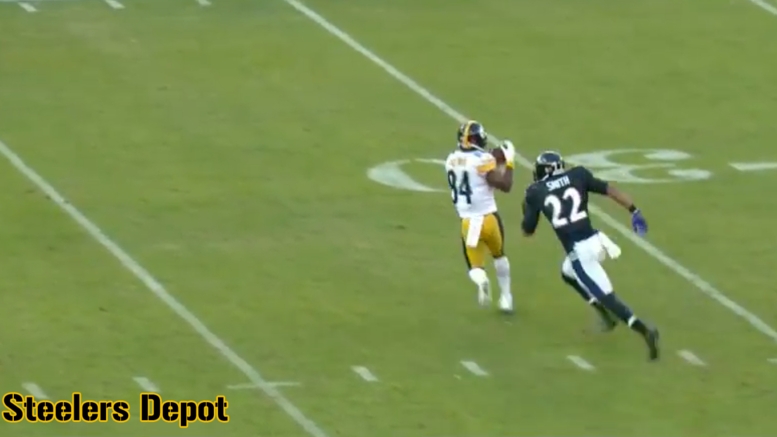One of the interesting things that I happened to notice while charting the Pittsburgh Steelers’ offensive snaps the other day was this: they pretty much ran with three or more receivers on the field the entire game. Like, I’ve never seen a Steelers team do this, ever. And let’s remember, they were leading for most of the game, from late in the first quarter to the end.
There were 80 total offensive snaps for the Steelers, penalties included. 75 of those snaps were run from either 11 or 01 personnel groupings, or a stunning 94 percent. The entirety of the first half was played out of these looks, and all of the first 42 plays.
In fact, the only play in the first 54 that the Steelers ran on offense on Sunday against the Baltimore Ravens that featured fewer than three wide receivers was the play in which JuJu Smith-Schuster was struck in the helmet by safety Eric Weddle. The second-year player had to come off the field to go through the concussion protocol. Vance McDonald replaced him for one play before a different receiver was brought on.
Xavier Grimble and Chukwuma Okorafor, both of whom played a lot a week earlier against the Clevleand Browns, did not see the field at all on offense. McDonald and Jesse James pretty consistently rotated, usually by drives, which was especially true in the first half, and they barely played together at all throughout the game.
So why, after weeks of featuring a larger amount of heavy packages, especially earlier in the game, did the Steelers and offensive coordinator Randy Fichtner decide to just roll with the wide receiver look, in spite of the fact that they still as of yet do not have a settled number three?
I think I have two reasons, one of which is opponent-specific, the other more general. The Ravens quite simply have one of the top front sevens in all of football with the likes of C.J. Mosely, Brandon Williams, and Michael Pierce leading the way. You’re not going to win with straight power.
But more importantly, another thing the Steelers have come to learn in recent weeks is that they can run the ball with success out of 11 personnel, thanks to quality blocking from the tight end and wide receiver positions and the accomplished power run schemes that get linemen to the perimeter to run off the edge.
The Steelers ran the ball 26 times out of 11 personnel against the Ravens on Sunday for 110 yards, averaging 4.23 yards per carry. They rushed for 40 yards on four carries in the first quarter, 30 yards on five carries in the seconds, 23 yards on seven carries in the third, but just 17 yards on 10 carries in the fourth.
Naturally, the going got tougher late in the game as the Steelers were trying to run out the clock, sometimes with a two-possession lead. But I don’t think that was about not having enough big bodies on the field.








